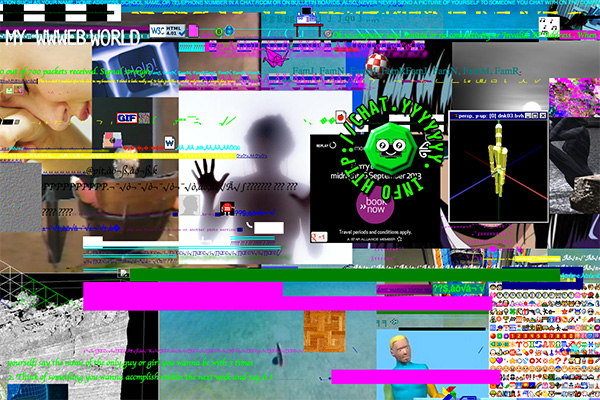Art both expresses and reflects the society in which it was produced. In an Internet-obsessed society it hardly comes as a surprise, then, that Internet art is thriving.
Net art is hard to pin down and categorise, because it is as diverse as the Internet itself. Just like Internet pornography, there’s something for everyone. There are:
- shrines to cats rendered in amateurish gifs and HTML;
- glitch videos that look like a pack of highlighters mated with TV static;
- 3D rendered visuals that look like a mash-up of naked Sims, and even
- browser extensions that promise to eradicate Justin Bieber from your Internet experience.
One pair of artists even staged a suicide scene and broadcast it on Chatroulette, filming peoples’ reactions. A look at some of the most popular Internet artworks can leave you confused, uneasy, and asking “is it art?”
All this has happened before, though, and will happen again. Contemporary Internet art takes many cues from Dadaism, the art movement that culminated in 1917 when Marcel Duchamp shocked the art community and forced it to question what exactly art is. His infamous artwork “Fountain” (a porcelain urinal tipped on its side and plonked in an art gallery) expanded the boundaries of the art world, and art has become increasingly weirder since. With the invention and popularisation of the Internet since the early 90s, artists have found a whole new medium to play with – forget the tempera, brushes, clay, or Perspex: Internet artists use pixels and code to create surreal, blasphemous, absurd, queer creations.
It is often hard to tell the difference between Internet art and poorly photoshopped cat pictures cobbled together and posted on Tumblr. Internet art is kitsch, ironic, and meta in the extreme. Yung Jake’s piece Datamosh (look it up on YouTube) sums it up best:
“You thought it was an accident, a video glitch.
I did it on purpose though … it’s nothing.
You don’t have bad Internet, I’m just datamoshing
(swag) I’m on my web shit, ya heard me?
It’s cool cause its nerrrrdyyyyy.”
Yung Jake drawls these lyrics tonelessly over a video that looks like the Internet (circa 2001) took an acid trip.
Nostalgia, irony, and meta mingle in net art to produce a body of work that sums up contemporary culture in a way that artists like Andy Warhol and Robert Rauschenberg did in the 50s and 60s. Greg Leuch’s project “Shaved Bieber,” a browser extension that promises to eradicate Justin Bieber from your Internet experience, comments on society’s relentless obsession with Justin Bieber, and, in turn, our weariness with Bieber’s overexposure.
Looking deeper at net art, the dichotomy between maximalism and minimalism has become a recurring theme. Take Michael Guidetti’s yyyyyyy.info for example – visit the site and you’ll see the hyper-coloured flotsam and jetsam of the Internet heaped on a page in all its weird glory. There’s a glut of visual noise; maximalism indeed. But take a look at the source code behind the mess and you’ll find a neatly structured, very basic HTML document creating the bones for the absurd facade. Even the CSS is pared back, relying on (now antiquated) web-safe colour standards and generic fonts.
Net art is intriguing and disturbing. It’s exciting to see what artists can create with the Internet, but it can be sickening when those artworks cause you to ask some deep questions about yourself and your society; Eva and Franco Mattes’ piece “No Fun,” which recorded Chatroulette participants’ reactions to a staged suicide, makes you wonder about peoples’ respect and concern for fellow human beings.
Art holds a mirror up to society, and Internet art does a particularly good job at reflecting ours in a very “warts-and-all” manner. If you’re not the type to visit galleries, you might like to delve a little into the weird world of Internet art. Skip Buzzfeed for an evening and Google a few of these artists:
- Eva and Franco Mattes
- Yung Jake
- Lorna Mills (she posts on Google+ - I can’t figure out if that’s making a statement or not)
- Michael Guidetti’s yyyyyyy.info

Posted 2:39pm Sunday 15th September 2013 by Raquel Moss.
ABOUT THE AUTHOR
Technology Editor 2013
MORE CULTURE STORIES
- Cheap As Chips! Critic’s Summer Goodies
- Skulls, Sea-Shanties & a Full Cream Speight’s: A Farewell Tour of Ōtepoti
- Who Said That?
- Sins & Virtues of Flatting
- Penetrating the Perfect Pussy Problem
- Asking for a Friend
- Where the Fuck the Function?!
- Stock Your Flat For Free
- Everything I know About Hate
- New Zealand Young Writers Fest: A Review


